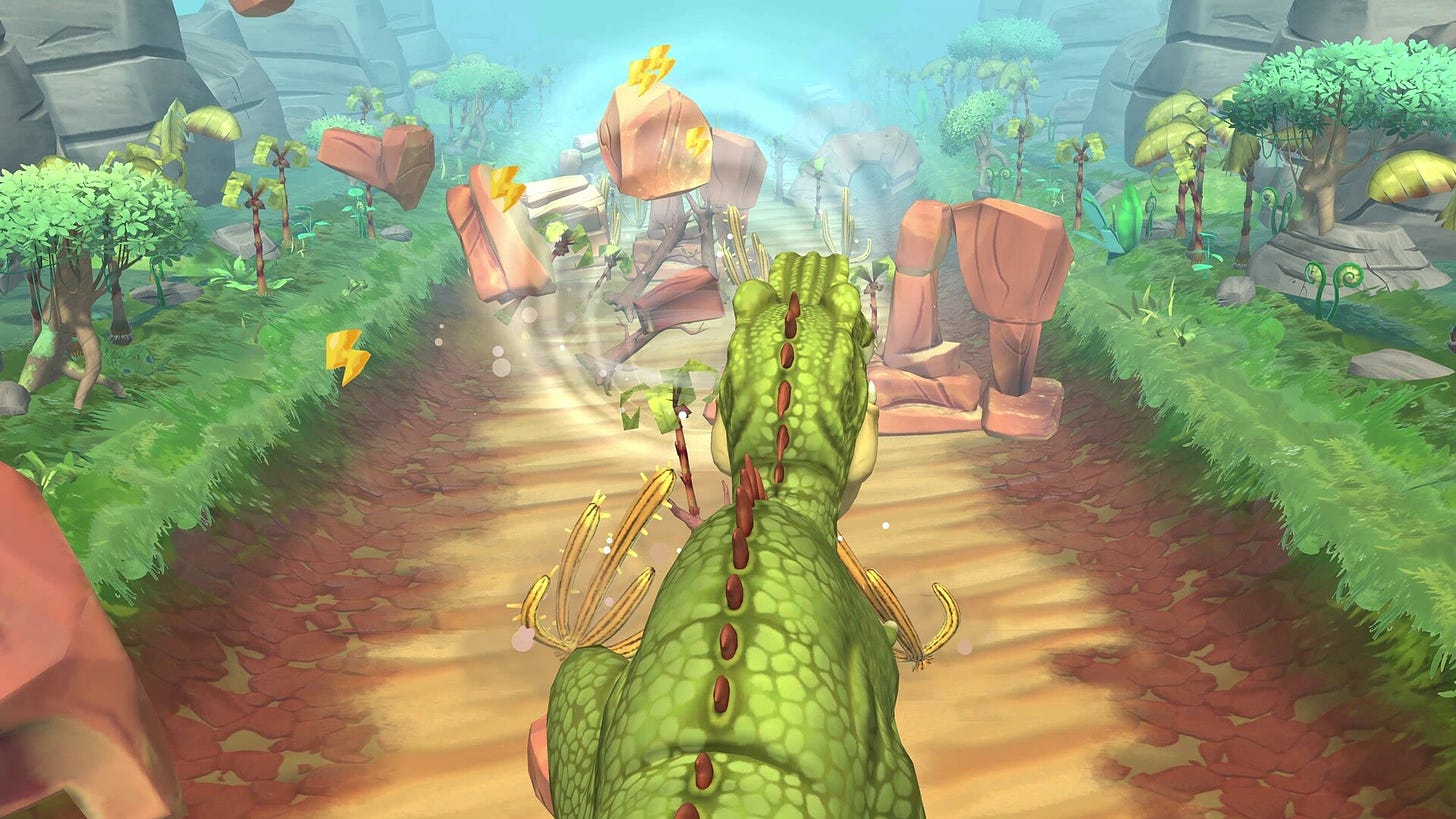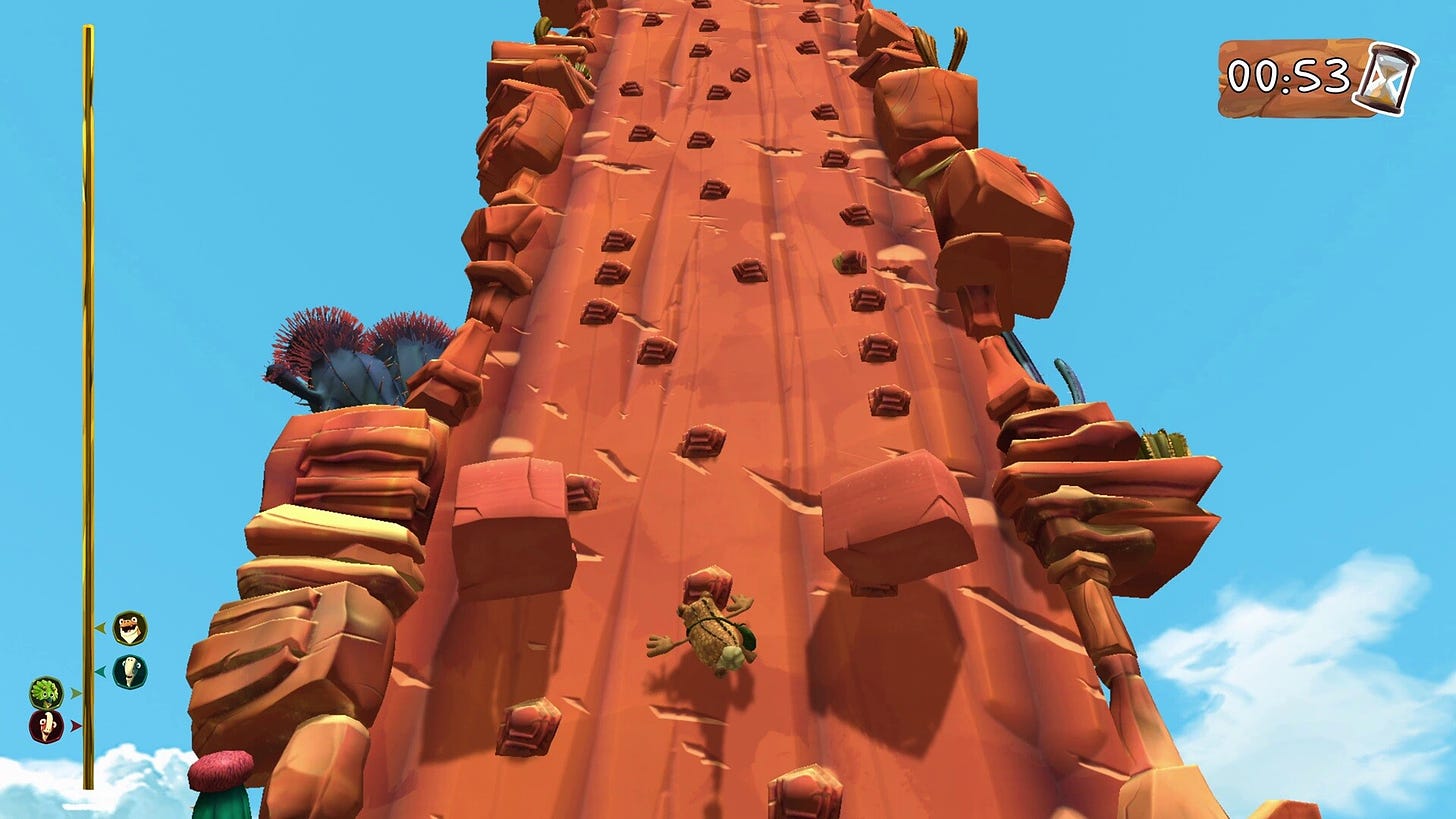The Best Way to Design Your Game For Kids Is By Watching Them Break It
An interview with a producer at Outright Games, a publisher behind many kid-centric games these days, about involving children in the development process.
Outright Games brands themselves as a “family friendly video games publisher.” Sure, they’re not exactly Nintendo, but whether or not you’ve taken note of them, chances are you’ve played a game published by them if you have young kids in the house. My Little Pony. PJ Masks. PAW Patrol. Bluey. Rainbow High. The list keeps going. One of the most recent games published by Outright Games was Gigantosaurus: Dino Sports.
I’m personally unfamiliar with Gigantosaurus, despite a love of dinosaurs, but it’s:
A popular book.
A hit series on Disney.
This is the third game published by Outright Games based on Gigantosaurus, following Gigantosaurus: The Game in 2020 and Gigantosaurus: Dino Kart! In 2022.
Part of what makes Outright Games fascinating is how open they are about making sure kids are at the center of their games. With games like PAW Patrol World, for example, Outright Games includes voice over for everything, including the menus, to make sure children can navigate on their own, regardless of reading level. Very few companies, not even Nintendo, try this. There’s an option to lock the camera behind the player, a problem that I ran into with my youngest while trying o play Astro Bot.
It’s seemingly little stuff, but it matters.
“Sometimes you start to think, ‘Okay, how can I improve this mechanic or make it more accessible for kids?’ said Gigantosaurus: Dino Sports producer Ana Clemente Pablo in an interview about the publisher’s process, “but then when the play session starts, you realize that it's different! Because we are adults, and we play very different.”
To that point, Ana pointed towards a play session during Dino Sports’ development where players were tasked with a mini-game where you feed the dinosaurs. The mini-game, like many mini-games, involved hitting the A button over and over again to win. But what Ana observed was that younger players quickly grew tired of hitting the A button and, instead, started holding the A button down. And they would lose.
Consequently, Outright Games came up with two modes of play: kid and adult mode.
Unlike choosing between a difficulty mode in a video game, these are not binary choices. An adult can play in “adult” mode. A child can play in “kid” mode. An adult can play in “kid” mode. A child can play in “adult” mode.
It’s more about preferences, and the game adapts appropriately.
(The team went back and forth on whether to call it “adult” or “grown up” mode.)
“At the beginning, we thought about doing different difficulty modes, maybe selecting the age, the years old of the player at the moment,” said Ana.
In another mini-game, players are climbing rocks. “Adult” mode requires pressing the A button to climb the next rock. “Child” mode asks you to move in the right direction.
“I find it very, very difficult to find a cooperative game nowadays between parents and children, where the parent has as much fun as the child,” said Ana. “So it's difficult to find and create balance, but it's very, very interesting working in that field for that reason.”
Ana never dreamed of working in games when she was playing them with her dad and brother on weekends years and years ago. The group would pass a PlayStation 2 controller around, taking turns making progress in whatever single-player adventure they were working through that weekend.
“Video games have been my hobby for my whole life,” she said. “Working in a company like Outright Games, it's awesome for me, even creating video games for kids. It's awesome. Because when you're a child, you don't think about how this is done. You just sit down and enjoy it and have fun and it's awesome.”
Ana started at Outright Games in a department called QA, or quality assurance, where you’re often tasked with endlessly playing a game to document glitches.
“I find it very, very difficult to find a cooperative game nowadays between parents and children, where the parent has as much fun as the child. So it's difficult to find and create balance, but it's very, very interesting working in that field for that reason.”
With Dino Sports, testing with children started in the “alpha” phase of development. It’s a period where games are playable but ways from looking polished and ready for release. But it’s a good opportunity, before any final decisions, to get real feedback.
For Dino Sports, it helped answered questions like:
Are kids skipping the cutscenes? (Always yes.)
Are the tutorials doing enough to explain what’s happening? (Almost always no.)
Are the children doing things they weren’t supposed to do? (Definitely.)
With cutscenes, Dino Sports asks players to hold a button down because children cannot be trusted during a cutscene. If they get antsy, they might start pressing buttons on the controller and accidentally skip the cutscene. Holding a button down for a long time extracts intentionality from the player. OK, fine, skip the cutscene.
In another instance, the team found that players never left a mini-game tutorial.
“In the climbing minigame, there is a wall that you have to climb,” said Ana. “[But kids would say] ‘No, I want to get to the top.’ There is no top! So they were playing forever, and the real gameplay, the real game, never started. That was the moment when that person who handled the playtesting was saying, "Well, maybe if you press the Y button, you will start the real gameplay, believe me." [laughs]”
As a result, the team added a timer that eventually shuffles you to the mini-game.
Testing early versions of games with kids has another bonus, too.
“They take a controller and [the game is] always crashing!” she laughed. “You are little testers! [laughs]”
Have a story idea? Want to share a tip? Got a funny parenting story? Drop Patrick an email.
Also:
I haven’t had a chance to write about it, but we did play (as a family) the new Mario Party game at PAX, and my youngest daughter managed to win a round!
Mario Party was a flop the first time we tried it years ago, because my oldest could not handle losing. She’s gotten better at that part now. Can’t wait.
If you’re a game developer/publisher, I’d love to hear more about your own processes when it comes to involving kids in the early testing. Email me!






